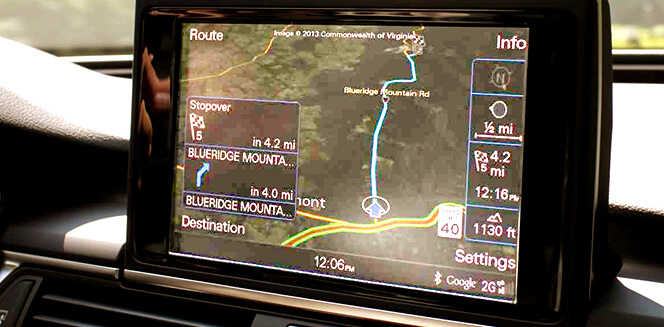Advancements in in-car infotainment systems market lead to connected cars

27 Apr
2016
In-car infotainment system Market: Offerings & Drivers
In-car infotainment system is a combination of entertainment, information and communication features and services that enhance driving experience. These systems consist of various connectivity options and technologies like Bluetooth and Wi-Fi, interactive voice recognition services, live media streaming service and mobile integration features. Equipped with advanced connectivity technologies, modern in-vehicle infotainment systems features offer various navigation services and offer a range of information to assist driver; they are updated on information regarding traffic conditions and weather forecast, docking stations for the smartphone for enabling hands free calls. Various high-performance operating control units such as human machine interfaces (HMI) expand access and control of the vehicles. Using the features in these systems enable playing and managing audio content, utilizing smart navigation for driving, and in their smartphone pairings.
Advancement technologies leading to innovative connectivity solutions drive the momentum of the adoption of in-vehicle infotainment solutions across regions; this will be driven by seamless integration of apps, user friendly menu based UIs and personalization. Increased adoption of smartphone and growing demand of cloud technology integrated with in-vehicle infotainment systems are the factors that boost the growth of the market.
Prominent car makers such as Audi and Ford make their In-vehicle infotainment systems simple to use, include comprehensive interfaces, advanced satellite navigation systems such as Sat-nav and focused cost-effectiveness of these features that will attract car buyers to incorporate advanced systems in their vehicles.
Manufacturers in various emerging nations focus on cost-effectiveness and smart navigation systems to make a successful foray in the in-vehicle infotainment market and gain competitive advantage. Recently, this month, Pioneer India has released AVIC-F80BT—an interactive in-vehicle infotainment system that is built on the Apple Car Play platform—at just 51,990 INR. The advanced infotainment system is equipped with features such as multi-color LED display, dual USB slots, steering wheel control compatibility, and Bluetooth. The users can listen to music from different sources and navigate across as many as 7000 cities and 500,000 towns across India. Such features increase the adoption of the connected cars in the market. Some of the best In-car infotainment systems are Audi MMI, BMW iDrive, Ford SYNC 2, Jaguar InControl, Mazda MZD Connect, Mercedes COMAND, Nissan CONNECT, SEAT Full Link, Vauxhall IntelliLink and Volkswagen Discover.
Next-Generation in-car infotainment systems
The integration of net connectivity with mobile platforms and smartphones are witnessed deciding the pace of development in in-car infotainment systems; OEMs and automotive manufacturers are intensively working on developing innovative infotainment systems—smartphone OS vendors develop systems that can be used in multiple environments—and these are securely integrated with the basic automotive systems. Automakers ensure that these features cause minimal distraction to the drivers and are super-responsive and enable easy installation. As the design of mobile ecosystems mature in the In-vehicle infotainment systems coupled with significant cost-reduction of these technologies, along with upgradation of obsolete in-vehicle infotainment systems, the market is likely to witness high adoption trends across various demographics, especially among younger generation. Aftermarket navigation services with built-in security software are driving next-generation infotainment systems; recent developments by services provided by third party vendors have stirred up the competitive landscape in in-vehicle infotainment market. Various firmware and app upgrades available in the market to increase the functionalities will unlock exciting opportunities in the market.
Market Prospects & Growth Opportunities
As per a recent report by Allied Market Research titled “World In-Car Infotainment Market- Opportunities and Forecasts, 2015 – 2022”, the world in-car infotainment market is expected to grow at a CAGR of 13.3% during the forecast period. Europe is expected to be the largest market followed by Asia-Pacific region while in-car infotainment systems witnessed the highest growth rate; the region accounted for 28.1% share of the overall market revenue and is forecast to grow at a significant CAGR of 16.4% during 2016–2022. Lack of seamless connectivity along with vulnerabilities of current automotive architecture from cyber-attacks are the key market challenges. Various third-party applications in connectivity platforms are operated by the service providers and aftermarket alternatives offered to car owners are the factors that can address security challenge of automobile infotainment connectivity.

Akhilesh Prabhugaonkar
Author's Bio- Akhilesh Prabhugaonkar holds a bachelor’s degree in Electronics Engineering from the reputed Vishwakarma Institute of Technology. He has a special interest in the fields of forensics, world history, international relations and foreign policy, sports, agriculture, astronomy, security, and oceanography. An ardent bibliophile and melophile, Akhilesh loves to write on topics of his interest and various other societal issues. This love for writing made him enter the professional world of content writing and pursue his career in this direction.
Avenue: Entire Library membership of Allied Market Research Reports at your disposal
- Avenue is an innovative subscription-based online report database.
- Avail an online access to the entire library of syndicated reports on more than 2,000 niche industries and company profiles on more than 12,000 firms across 11 domains.
- A cost-effective model tailored for entrepreneurs, investors, and students & researchers at universities.
- Request customizations, suggest new reports, and avail analyst support as per your requirements.
- Get an access to the library of reports at any time from any device and anywhere.
Related Post
-
How are Submarine Cables Transforming Global Connectivity with Enhanced User Experience?
-
Endoscopy Procedures: Transformations in Techniques and Applications
-
AI-Powered Video Analytics: How the Product Actually Works for enterprises
-
Painting Robots: Transforming Precision Coating and Creative Applications
-
Innovations in Pharmacovigilance Systems Advancing Patient Safety
-
Understanding Edge Security: Keeping Data Safe Near the Source
-
Exploring the Use and Advancements of 3D Laser Scanners in Professional Applications
-
Reinforcing Industrial Controls with Smarter Tools and Training








